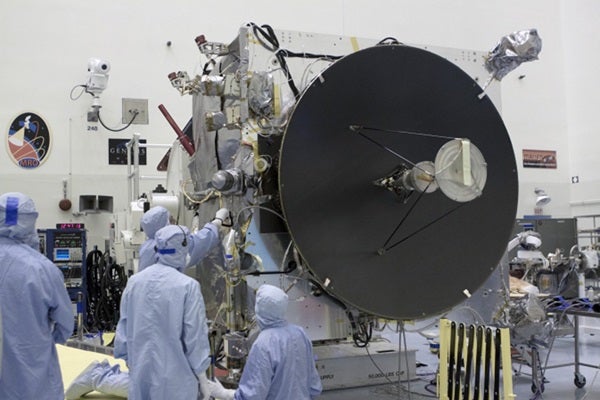MAVEN is the first spacecraft devoted to exploring and understanding the martian upper atmosphere. The trip to Mars takes 10 months, and MAVEN will go into orbit around Mars in September 2014.
The agency’s Mars Atmosphere and Volatile Evolution (MAVEN) spacecraft separated from an Atlas V Centaur rocket’s second stage 53 minutes after launch. The solar arrays deployed approximately one hour after launch and currently power the spacecraft. MAVEN now is embarking on a 10-month interplanetary cruise before arriving at Mars next September.
“MAVEN joins our orbiters and rovers already at Mars to explore yet another facet of the Red Planet and prepare for human missions there by the 2030s,” said Charles Bolden from NASA. “This mission is part of an integrated and strategic exploration program that is uncovering the mysteries of the solar system and enabling us to reach farther destinations.”
In the next four weeks, MAVEN will power on and check out each of its eight instruments. Upon arrival at Mars in September, the spacecraft will execute an orbit insertion maneuver, firing six thrusters that will allow it to be captured by Mars’ orbit. In the following five weeks, MAVEN will establish itself in an orbit where it can conduct science operations, deploy science appendages, and commission all instruments before starting its one-Earth-year scientific primary mission.
“After 10 years of developing the mission concept and then the hardware, it’s incredibly exciting to see MAVEN on its way,” said Bruce Jakosky from the University of Colorado Boulder’s Laboratory for Atmospheric and Space Physics in Boulder. “But the real excitement will come in 10 months, when we go into orbit around Mars and can start getting the science results we planned.”
MAVEN is traveling to Mars to explore how the Red Planet may have lost its atmosphere over billions of years. By analyzing the planet’s upper atmosphere and measuring current rates of atmospheric loss, MAVEN scientists hope to understand how Mars transitioned from a warm wet planet to the dry desert world we see today.
“The team overcame every challenge it encountered and still kept MAVEN on schedule and on budget,” said David Mitchell from NASA’s Goddard Space Flight Center in Greenbelt, Maryland. “The government, industry, and university partnership was determined and focused to return to Mars sooner, not later.”










